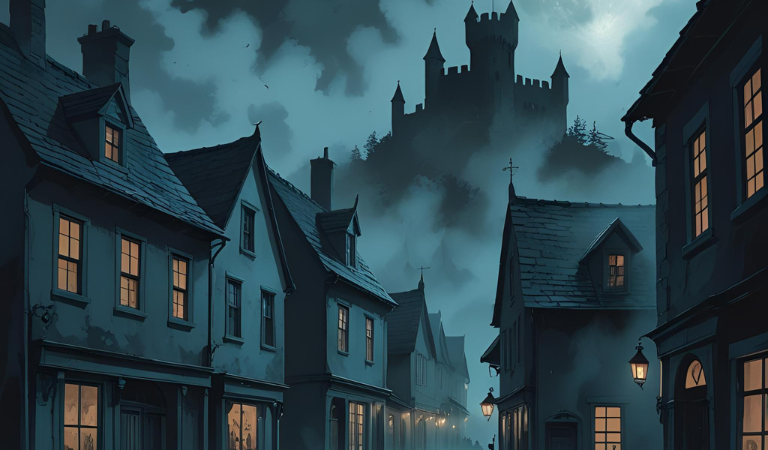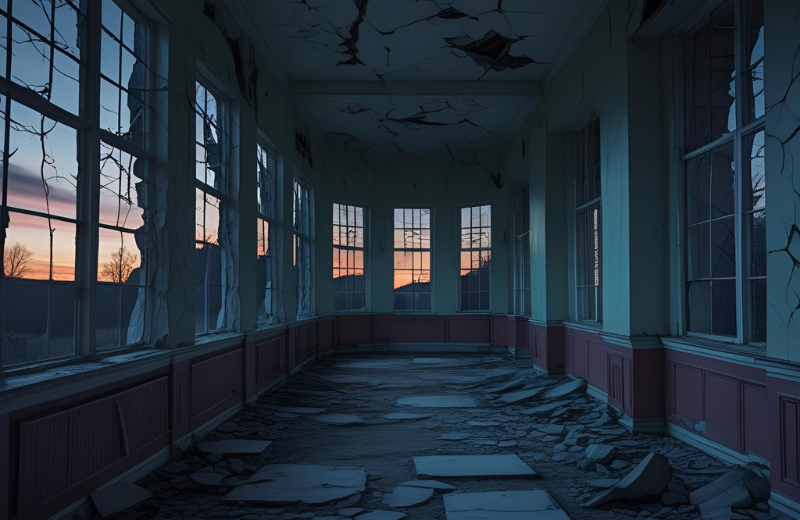Horror fiction has a remarkable ability to evoke intense emotions, whether it’s fear, unease, or suspense, drawing readers into a world where the unknown takes centre stage.
In this guide, we take you through the essential elements of writing a horror novel, from generating spine-chilling ideas to crafting complex characters and building an eerie, immersive world that will keep your readers on the edge of their seats.
Jump to:
- What is Horror Fiction?
- Step 1: Start With a Strong Idea
- Step 2: Create Your Horror Protagonist
- Step 3: Build Your Eerie World and Setting
- Step 4: Develop Your Antagonist or Force of Evil
- Step 5: Create Suspense and Build Tension
- Step 6: Write a Satisfying Ending
- Tips for Writing Horror Stories
- Frequently Asked Questions
- Study Our Novel Writing Diploma for £29
Recommended for you!
Best SellersWhat is Horror Fiction?
Horror fiction is a genre that taps into our deepest fears. It's designed to provoke feelings of terror, suspense, and dread, often by incorporating supernatural elements, monstrous creatures, and psychological twists. A horror story can be unsettling or extreme, and it has the power to make readers feel fear and unease in ways that other genres can’t.
Horror isn’t just about monsters or ghosts; it’s about creating an atmosphere that taps into the reader’s sense of vulnerability. Horror fiction can be supernatural or grounded in reality, but it must always evoke an emotional response in the audience.
Step 1: Start With a Strong Idea

Many successful horror novels begin with a compelling question or concept that sparks curiosity and dread. A great example of this is The Sixth Sense (1999), which opens with the question, "Why can this young boy see dead people?" The film’s concept is a perfect example of how a central, thought-provoking question can create a strong foundation for a horror story.
Consider these horror story ideas to get you started:
- A haunted house with a dark past.
- A curse that haunts a small town.
- A psychological thriller where fear becomes reality.
- A ghost story where the spirits want revenge.
Once you have your idea, you can start building your plot around it. Think about how the fear will evolve throughout the story and what twists or revelations will heighten the sense of dread.
Step 2: Create Your Horror Protagonist
To draw your readers in, create a character that they can relate to or even sympathise with, and then put them through unimaginable terror. The more the reader cares about your protagonist, the greater the tension will be when they face the horrors ahead.
- Give them a backstory: A protagonist with a unique past can add depth to the horror story. Perhaps they’ve experienced a traumatic event that makes them vulnerable to the supernatural forces at play.
- Make them flawed: A perfect protagonist can often feel unrealistic. Give your character fears or weaknesses that they need to overcome.
- Consider the stakes: What does your protagonist stand to lose? Their survival? Their loved ones? Their sanity?
Step 3: Build Your Eerie World and Setting

The setting in a horror novel plays a massive role in establishing the atmosphere. Whether you're writing horror fiction set in an abandoned mansion, a remote village, or a bustling city, your world should evoke fear and unease.
- Use the environment: Is the setting dark and isolated? Are there eerie sounds that echo through empty hallways? The setting should feel like a character in itself, something that creates a sense of dread every time it's mentioned.
- Think about time and place: The era, season, and weather can also set the tone. A cold, desolate winter night or a thunderstorm can add layers to your story. A haunted house or graveyard might be cliché, but if you make them feel real, they’ll be terrifying.
- Introduce mystery: What secrets does your setting hide? The mystery of a place is often more terrifying than what is seen on the surface. A town with a dark history or a house with hidden rooms can fuel a reader’s imagination.
The world-building in your horror novel should work in tandem with your plot and character development to create a deeply unsettling experience.
Step 4: Develop Your Antagonist or Force of Evil
Every great horror novel needs something or someone to oppose the protagonist. This could be a physical villain, such as a monster or a killer, or a more abstract force, such as a curse, the supernatural, or the protagonist's own mind. Your antagonist should be as memorable as your protagonist, and their motivations should create tension and conflict.
Your antagonist should instil fear, whether through their actions, appearance, or mysterious nature. Think of iconic horror antagonists like Pennywise the Clown or Michael Myers; both are terrifying not just because of what they do, but because of their unknown qualities.
Step 5: Create Suspense and Build Tension
Building tension is one of the most important skills in horror writing. The fear should escalate slowly, so that when the horrifying moment finally happens, it feels earned. Here’s how to build suspense in your horror story:
- Use pacing wisely: Slow moments of tension should build to faster, more frantic ones, with plenty of highs and lows.
- Foreshadowing: Drop subtle clues that something bad is coming, but don’t give it away too soon. This keeps readers on the edge of their seats.
- Isolate the characters: Put your characters in situations where they can’t escape. Whether it’s being trapped in a haunted house or lost in a forest, isolation heightens the fear.
Step 6: Write a Satisfying Ending

The ending of your horror novel is just as important as the beginning. It should deliver on the promises you’ve made throughout the story, whether that’s a shocking twist or a climactic showdown.
- Tie up loose ends: Your readers should feel like they’ve been taken on a journey, and the resolution should feel earned. This doesn’t mean everything needs to be happy, but the ending should feel like the natural conclusion to the horrors you’ve set in motion.
- Leave a lingering fear: Sometimes, the most unsettling endings are the ones that leave something up to the imagination. Maybe the horror isn’t fully defeated, and the terror continues.
Tips for Writing Horror Stories
Writing horror isn’t easy, and sometimes, inspiration can be hard to come by. If you’re feeling stuck, here are some tips on writing horror:
- Use your own fears: What scares you? Incorporating your own anxieties into your story can make it feel more authentic and terrifying.
- Experiment with horror subgenres: Try writing ghost stories, psychological horror, or even cosy horror to explore different kinds of fear.
- Study other horror writers: Examine how Stephen King writes horror. What makes his novels so effective? Study authors who excel in the genre to see how they craft their stories.
Recommended for you!
Best SellersFrequently Asked Questions
How long should a horror novel be?
The length of a horror novel varies depending on the story you want to tell. However, a typical horror novel ranges from 70,000 to 100,000 words. Some shorter horror novels or novellas might be as brief as 40,000 words, while longer, more complex stories can go beyond 100,000 words. Ultimately, your story’s length should serve the pacing and the horror elements rather than feeling forced to meet a specific word count.
What qualifies a book as horror?
A book is generally classified as horror if it evokes fear, dread, or suspense through its narrative. While there are many subgenres within horror, such as slasher, supernatural, and gothic, the common thread is the intent to frighten or unsettle the reader.
What is the difference between horror and thriller?
While both genres aim to create tension and suspense, the primary difference lies in the emotional response they evoke. A horror story is designed to make the reader feel uneasy and scared, while a thriller focuses on excitement and anticipation. Thrillers often centre on a mystery or a crime where the goal is to keep the reader on the edge of their seat.
How do you write unsettling horror?
To write unsettling horror, use subtle hints and descriptions that imply something is wrong without fully revealing it. Ambiguity can make the unknown even scarier, as readers are left to imagine the worst. Slow pacing, eerie environments, and unreliable characters can all help to create that unsettling feeling.
What is quiet horror?
Quiet horror is a subgenre that focuses on building dread and unease through subtlety rather than overt scares. It’s about what is not shown; the unseen threat that lurks just out of view, creating an atmosphere of tension and fear. This type of horror often explores the psychological or emotional toll of fear, rather than relying on gore or shocking violence.
Study Our Novel Writing Diploma for £29
If you're ready to master the craft of storytelling, our Novel Writing Diploma Course at Centre of Excellence is the perfect next step. Learn how to structure your story, develop your characters, and create the kind of spine-chilling suspense that keeps readers up at night. You can enrol now for just £29!












